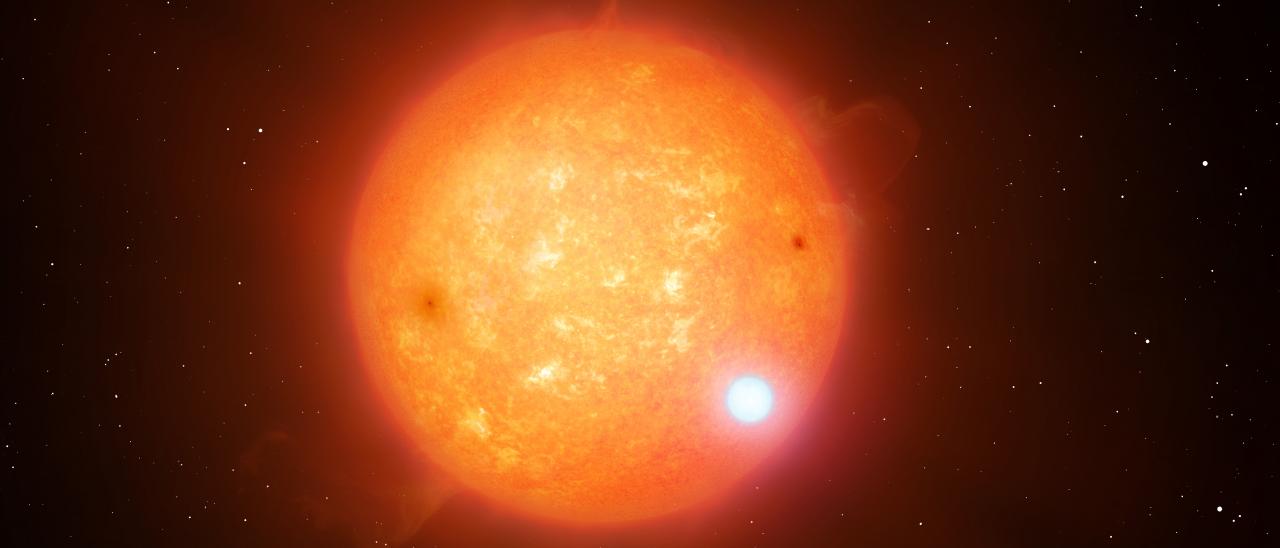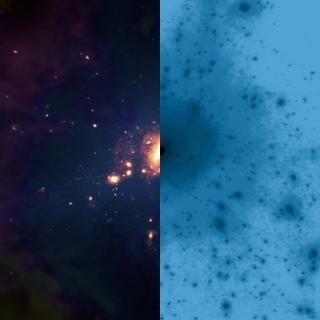An international team, led by a researcher from the Universitat Politècnica de Catalunya - BarcelonaTech (UPC) and the Institute of Space Studies of Catalonia (IEEC), has measured for the first time the stellar parameters of a very old kind of stars, known as cool subdwarf stars, in our Galaxy, the Milky Way. Cool subdwarfs are stars like our Sun, but of smaller mass and radius, which formed during the beginning of the Milky Way and, therefore, carry important information about its structure and chemical evolution. The work has been done in collaboration with researchers from the University of Sheffield and the National Astronomical Observatories, Chinese Academy of Sciences, and the results are published in the journal Nature Astronomy.
When the Milky Way formed, the first stars were mainly composed of hydrogen. Heavier elements than hydrogen or helium are considered as metals in astronomy and their presence determines the metallicity of a star. As time passed and stars died, the content of such metals in the Milky Way and in the new stars born increased. Therefore, old stars have lower metallicity than younger ones.
"Since old stars can reveal important information about the structure and the chemical evolution of the Milky Way, it is essential for astronomers to determine their most basic stellar parameters such as masses and radii", explains the researcher from the UPC and IEEC Alberto Rebassa Mansergas, who has led the study.
Because old stars are faint and they are relatively rare in the vicinity of the Sun, few cool subdwarfs are known in our solar neighbourhood. Currently, the radius of only 88 and the masses of six cool subdwarfs have been estimated. However, no mass and radius values for the same cool subdwarf had been accurately measured, leaving the theoretical studies for such stars untested until now. In their work, the researchers have found the first cool subdwarf in an eclipsing binary system , a system where two stars orbit one another, in this case, a cool subdwarf and a white dwarf. "Eclipsing binaries offer the opportunity to measure directly the masses and radii of the two components with unprecedented precision'', argues Rebassa Mansergas.
A revolutionary camera
Until now scientists did not have a camera powerful enough to get accurate measurements of stellar components such as mass and radius. Thanks to the use of the HiPERCAM instrument installed in the GTC, in the Roque de los Muchachos Observatory (Garafía, La Palma), combined with data from the X-Shooter instrument of the Unit 2 telescope of ESO's Very Large Telescope (VLT), in Chile, the researchers were able to measure the star accurately for the first time.
The article is the first to be published using HiPERCAM data. According to Vikram Dhillon, an astrophysicist at the University of Sheffield, an IAC affiliate researcher and one of those responsible for the HiPERCAM project: "Our measurement of the mass and radius of this ancient star confirms a key prediction of the theory of stellar structure and demonstrates the unique capabilities of our new camera HiPERCAM on the 10.4m Gran Telescopio Canarias".
This camera can take one picture every millisecond, unlike other cameras that normally only take one picture every few minutes. Thanks to its high capture speed, HiPERCAM makes it possible to study in unprecedented detail objects with rapid variations in brightness due to phenomena such as eclipses and explosions. "The observations with HiPERCAM in GTC have allowed to obtain the curves of light of this object in up to 5 filters simultaneously with an unprecedented precision, thanks to the collecting capacity of the telescope. The HiPERCAM/GTC combination opens an extraordinary door to the study of objects with temporal variability, providing a very high temporal resolution and covering a range of magnitudes unattainable for other telescopes", explains Antonio Cabrera, head of scientific operations at the GTC.
With these values, together with the temperature and the luminosity of the cool subdwarf star also obtained from the observations, the authors were able to validate, for the first time, the theoretical relations between the mass, radius, luminosity, and temperature for the oldest stars in our Galaxy.
The Gran Telescopio Canarias (GTC) and the Observatories of the Instituto de Astrofísica de Canarias (IAC) are part of the network of Singular Scientific and Technical Instructures (ICTS) of Spain.
Article: Alberto Rebassa-Mansergas et al. "Accurate mass and radius determinations of a cool subdwarf in an eclipsing binary", Nature Astronomy, 2019; DOI: 10.1038/s41550-019-0746-7
More information:
Press Release University of Sheffield
Contact:
Alberto Rebassa Mansergas, Physics Department, Universitat Politècnica de Catalunya - BarcelonaTech: alberto.rebassa [at] upc.edu (alberto[dot]rebassa[at]upc[dot]edu)
Vikram Dhillon, University of Sheffield and IAC affiliate researcher: vik.dhillon [at] sheffield.ac.uk (vik[dot]dhillon[at]sheffield[dot]ac[dot]uk)
Antonio Luis Cabrera, head of scientific operations at the GTC: antonio.cabrera [at] gtc.iac.es (antonio[dot]cabrera[at]gtc[dot]iac[dot]es)



